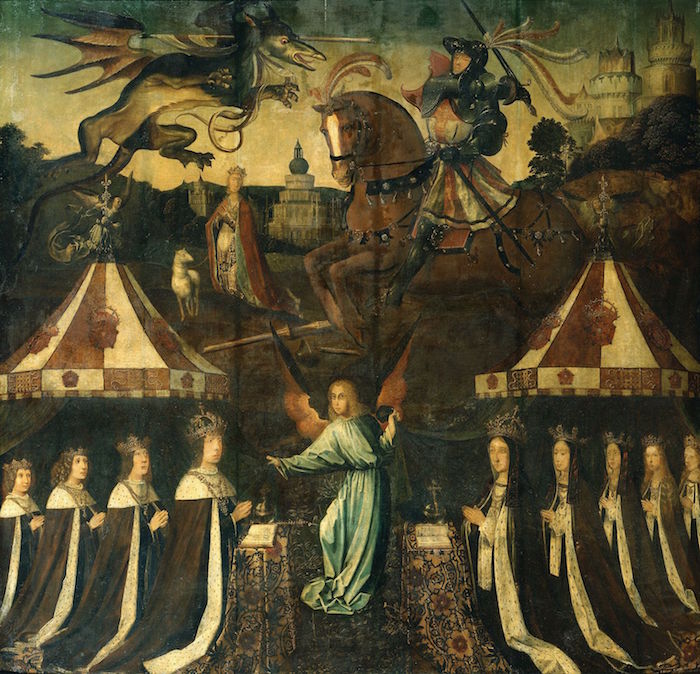25th November 2015
"And there, of course, is my mother standing under the standard of the husband she adored, and as I look towards her and raise my hand, she gives a girlish jump of joy that I have seen her and she waves both her hands above her head, shouting my name, exuberant, laughing, rebellious as ever. She starts to run along the riverbank, keeping pace with my distant barge, shouting, ‘Elizabeth! Elizabeth! Hurrah!’ so clearly that I can hear her over the noise across the water. I rise up from my solemn throne, rush to the side of the boat and lean out to wave back at her, quite without any dignity, and shout, ‘Lady Mother! Here I am!’ and laugh aloud in delight that I have seen her, and that she has seen me, and that I am going to my coronation with her laughing easy blessing."
A quote from The White Princess to celebrate the anniversary of Elizabeth of York's coronation, in 1487. Henry VII had been crowned more than two years earlier, before their marriage and the birth of their first son, Arthur. His mother-in-law Elizabeth Woodville was notably absent from her daughter's coronation, which was attended by other York ladies including Cecily of York, Margaret Pole and Katherine Tudor (née Woodville).
For a conqueror to entertain a queen of the previous dynasty at his wife's coronation could certainly have been awkward, but it seems likely that there were other reasons for Elizabeth's exclusion. Earlier in the year the Simnel rebellion had taken place, and the royal council had transferred Elizabeth's lands to her daughter. Elizabeth was sent to live in Bermondsey Abbey – whether this was voluntary is not clear. I believe Henry suspected her of conspiring with the rebels, and was deliberately minimising her participation in court life. Nevertheless, Elizabeth of York's coronation was a triumph for her entire family. The king might be a Tudor and Lancastrian, but the queen was a York, and the next monarch would be from both families.
The painting is 'The Family of Henry VII with St George and the Dragon', showing Elizabeth of York and Henry with their children, as though all had survived. It was painted c.1503–9, probably commissioned by Henry. You can see the Lancastrian rose and the Beaufort portcullis on the tents.

Image: Royal Collection, RCIN 401228.